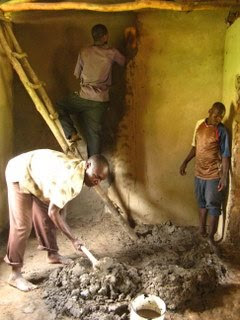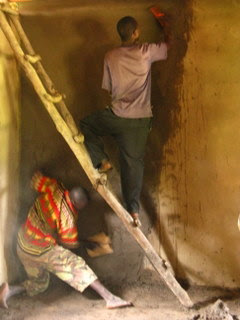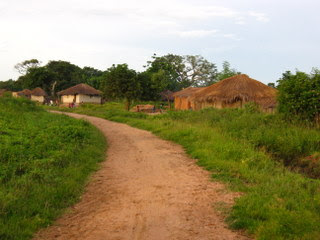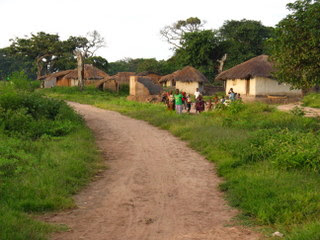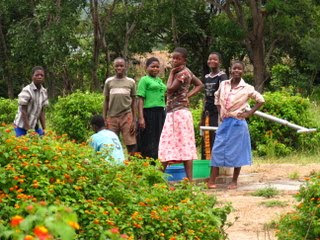The Resource Center is nearing completion. This is my biggest project so far. The floor is now finished and we will start using it in about a week. We have over 1,000 hours of labor and about $600 in this project. The purpose of this building is Community development. It will serve as an office and organizing point for the area Community Based Organization and groups under it such as HIV/AIDS support groups, orphan care, food security, bee keeping, poultry raising and other groups the community decides are important. It will be a place for community meetings, trainings, adult education and development planning and will contain a small library of books, information and reference materials. It will be a focus of development for the community by its physical presence and a place for the planning, training and activities needed for development to take place.
I will soon be starting training workshops in tinsmithing, carpentry and tailoring. We still need some money to finish construction as well as tin sheets, planks, cloth, and miscellaneous supplies.
We also need tools like hammers, saws, planes and chisels as well as a treadle sewing machine which costs about $100. Any donations you can make would be greatly appreciated. These donations will provide capital investment for small income generating businesses in the community.
You can easily contribute by selecting the Donate button at the top of the column to the right. It's safe and easy by credit card or from your bank account and the money goes right to me. Thanks.
Today we are plastering the walls.
First dambo sand is dug and hauled in with wheel barrows or buckets. Dambo sand is a sand and clay mix which is found locally. A small amount of cement is added for more strength.
The plaster is put on the wall and smoothed with wooden floats.


